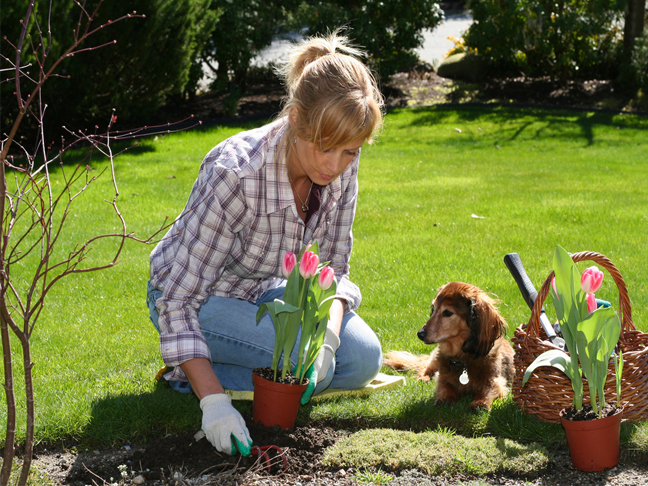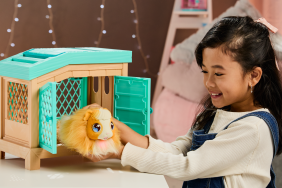The warmer Spring weather always makes me feel full of new energy and that surge of energy provides a great opportunity for tacklng new household projects. But before you begin any new project, it’s important to keep your pets in mind when you’re working on projects that require using products and materials that could potentially be hazardous to your pet.
Home Improvement & Spring Cleaning Projects
Common home improvement projects often include using materials like paints, thinning products, plastering materials, brushes, sponges and cleaning products. While most of these items are seen as commonplace and are typically not harmful, your pet might become curious about them if left unattended. So there’s nothing to become alarmed about when attempting any of these projects, except to note that we should always take care to keep their associated products and materials out of reach of your pets, in much the same way as you would with your children. Pet’s are naturally curious creatures, so they rely on us to help keep them safe and make sure they don’t ingest or chew on something that could potentially be hazardous or life threatening to their health.
Springtime Gardening & Landscaping Projects
There’s nothing more enjoyable than getting back out into the yard again for the first time after many months of winter weather. So as you begin any new landscaping or gardening projects, be sure to keep any fertilizers, insecticides, herbicides, etc. stored safely away from your pets and children. And these days, there are also many new natural garden and snail remedies available that can often be used successfully in place of the more toxic, chemical products.
And it’s also not a bad idea to review ahead of time, lists of plants that could potentially be harmful or have adverse effects on your pets or your children. This hazardous plant list from the ASPCA is a great resource to begin with since it lists many of the plants that can be potentially harmful to your pets.
Springtime & Environmental Pet Allergies
Pets can also suffer from allergy issues and their accompanying symptoms that can be similar to what humans experience. Just like humans, pets can also have allergies to dust, pollens, molds, pet foods and several of these things are more commonly experienced in the Springtime. If you notice you pet has been sniffling, sneezing or seems to be having trouble breathing, your first course of action should be to call your Veterinarian immediately. However, if you just want to gain some general background knowledge on the subject, you can read more about common pet allergies and symptoms here.
ASPCA Pet Emergency Hotline
And as a last resort in any pet emergency situation if your Veterinarian is not available, it’s good to know that the ASPCA has an emergency hotline that operates 24 hours a day, 365 days a year if you suspect your pet may have been accidentally poisoned or harmed by a toxic product and their number is: 888-426-4435.
So as you can see, just a little bit of knowledge and planning can go a long way towards keeping your pets safe, not only in the Springtime, but year round too. So get out there and forge ahead now with some of those Spring projects you’ve been thinking about doing.








